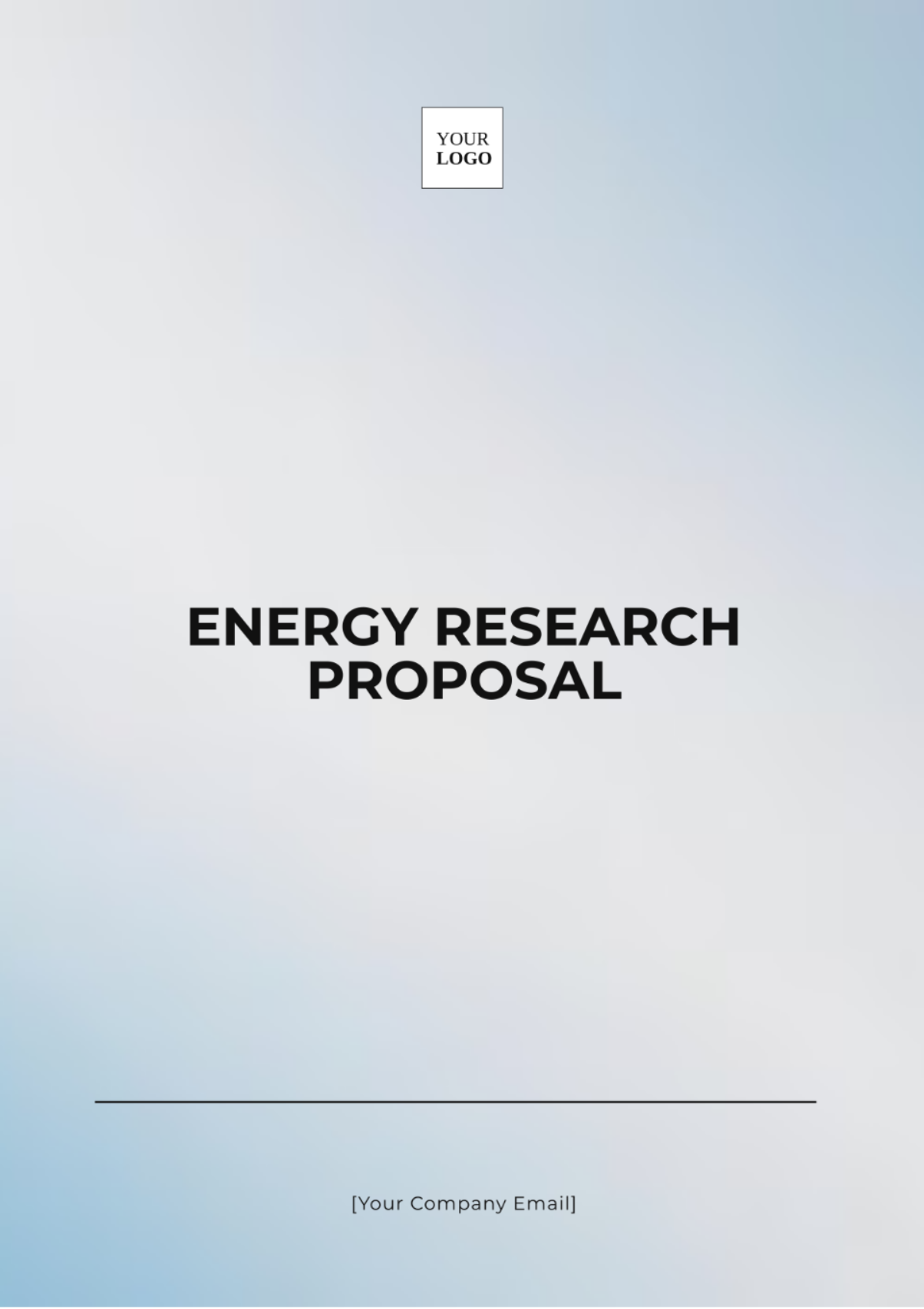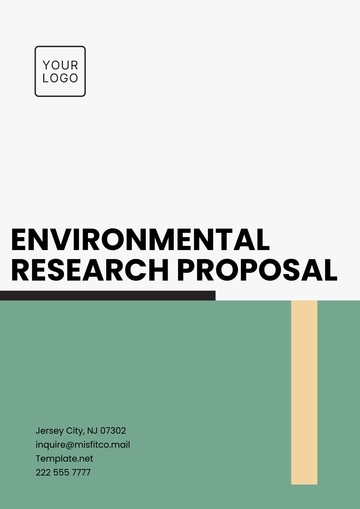Free Energy Research Proposal

Prepared By: [YOUR NAME]
Date: [DATE]
I. Abstract
This research proposal intends to explore the feasibility of integrating renewable energy sources like solar and wind into the national grid to lessen reliance on fossil fuels, with a focus on assessing the technical, economic, and environmental implications. The study will involve collecting data, creating simulation models, and performing cost-benefit analyses, aiming to identify ideal energy combinations, strategies for cost reduction, and environmental advantages, ultimately aiding in policy formulation and promoting sustainable development.
II. Introduction
The global energy landscape is undergoing a significant transformation driven by the need to mitigate climate change and ensure energy security. Despite the advancement in renewable energy technologies, the transition from fossil fuels remains slow due to economic and technical barriers. This research aims to address these barriers by investigating the integration of solar and wind energy into the national grid.
The primary objectives are:
Evaluate Technical Feasibility: Examine the challenges and requirements for integrating renewable energy sources into the national grid, focusing on grid stability, technology compatibility, and infrastructure needs.
Analyze Economic Implications: Assess the financial aspects of renewable energy deployment, including investment costs, cost savings, and economic impacts on the energy market and consumers.
Assess Environmental Benefits: Measure the environmental advantages of switching from fossil fuels to renewable energy, such as reductions in greenhouse gas emissions and improvements in air and water quality.
III. Literature Review
Considerable research has been conducted on various aspects of renewable energy integration. Studies by Smith et al. (2050) and Jones (2059) have demonstrated the potential of solar and wind energy to meet substantial portions of electricity demand. Economic analyses by Brown and Taylor (2058) highlight the cost-saving potential of renewables over the long term. However, research gaps remain in optimizing energy mixes and assessing the holistic impacts on national grids.
IV. Methodology
The research will be conducted in three phases:
Data Collection: Gathering data on current energy consumption, renewable energy potentials, and grid capabilities from existing databases and field surveys.
Simulation Modeling: Using software tools like HOMER and MATLAB/Simulink to model different scenarios for renewable energy integration.
Cost-Benefit Analysis: Evaluating the economic viability through Net Present Value (NPV) and Levelized Cost of Energy (LCOE) calculations.
V. Expected Results
A thorough grasp of technical needs for integrating solar and wind energy into existing systems.
The process of identifying and developing economical and efficient strategies for the deployment and utilization of renewable energy sources.
The process of quantifying the environmental benefits includes the measurement and assessment of decreases in greenhouse gas emissions.
Comprehensive guidelines for policymakers on encouraging the adoption and growth of renewable energy sources through incentives and regulatory measures.
VI. Budget
Item | Cost (USD) |
|---|---|
Data Collection | 10,000 |
Software Licenses | 5,000 |
Personnel (Researchers, Assistants) | 50,000 |
Travel and Field Surveys | 15,000 |
Miscellaneous | 5,000 |
Total | 85,000 |
VII. Timeline
Task | Duration (Months) | Start Date | End Date |
|---|---|---|---|
Data Collection | 3 | January 2060 | March 2060 |
Simulation Modeling | 4 | April 2060 | July 2060 |
Cost-Benefit Analysis | 2 | August 2060 | September 2060 |
Report Writing | 1 | October 2060 | October 2060 |
Review and Submission | 1 | November 2060 | November 2060 |
VIII. References
Brown, J., & Taylor, S. (2058). Economic Analysis of Renewable Energy Integration. Energy Economics, 45, 123-130.
Jones, A. (2059). Renewable Energy and the Future of National Grids. Journal of Sustainable Energy, 12(3), 200-215.
Smith, P., et al. (2050). Technical Feasibility of Solar and Wind Energy. Renewable Energy Journal, 26(4), 334-349.
- 100% Customizable, free editor
- Access 1 Million+ Templates, photo’s & graphics
- Download or share as a template
- Click and replace photos, graphics, text, backgrounds
- Resize, crop, AI write & more
- Access advanced editor
Drive energy solutions with our Energy Research Proposal Template from Template.net. This editable and customizable template is crafted to assist you in presenting your research objectives, methodologies, and potential impacts in the energy sector. Editable in our AI Editor Tool, it offers you the ability to tailor the content to fit your unique research needs.
You may also like
- Business Proposal
- Research Proposal
- Proposal Request
- Project Proposal
- Grant Proposal
- Photography Proposal
- Job Proposal
- Budget Proposal
- Marketing Proposal
- Branding Proposal
- Advertising Proposal
- Sales Proposal
- Startup Proposal
- Event Proposal
- Creative Proposal
- Restaurant Proposal
- Blank Proposal
- One Page Proposal
- Proposal Report
- IT Proposal
- Non Profit Proposal
- Training Proposal
- Construction Proposal
- School Proposal
- Cleaning Proposal
- Contract Proposal
- HR Proposal
- Travel Agency Proposal
- Small Business Proposal
- Investment Proposal
- Bid Proposal
- Retail Business Proposal
- Sponsorship Proposal
- Academic Proposal
- Partnership Proposal
- Work Proposal
- Agency Proposal
- University Proposal
- Accounting Proposal
- Real Estate Proposal
- Hotel Proposal
- Product Proposal
- Advertising Agency Proposal
- Development Proposal
- Loan Proposal
- Website Proposal
- Nursing Home Proposal
- Financial Proposal
- Salon Proposal
- Freelancer Proposal
- Funding Proposal
- Work from Home Proposal
- Company Proposal
- Consulting Proposal
- Educational Proposal
- Construction Bid Proposal
- Interior Design Proposal
- New Product Proposal
- Sports Proposal
- Corporate Proposal
- Food Proposal
- Property Proposal
- Maintenance Proposal
- Purchase Proposal
- Rental Proposal
- Recruitment Proposal
- Social Media Proposal
- Travel Proposal
- Trip Proposal
- Software Proposal
- Conference Proposal
- Graphic Design Proposal
- Law Firm Proposal
- Medical Proposal
- Music Proposal
- Pricing Proposal
- SEO Proposal
- Strategy Proposal
- Technical Proposal
- Coaching Proposal
- Ecommerce Proposal
- Fundraising Proposal
- Landscaping Proposal
- Charity Proposal
- Contractor Proposal
- Exhibition Proposal
- Art Proposal
- Mobile Proposal
- Equipment Proposal
- Student Proposal
- Engineering Proposal
- Business Proposal





























